Menu
Physics Lesson 7.3.1 - The Meaning of Centripetal Force
Please provide a rating, it takes seconds and helps us to keep this resource free for all to use
Welcome to our Physics lesson on The Meaning of Centripetal Force, this is the first lesson of our suite of physics lessons covering the topic of Centripetal Force, you can find links to the other lessons within this tutorial and access additional physics learning resources below this lesson.
The Meaning of Centripetal Force
In the Physics tutorial "Kinematics of the Rotational Motion", we discussed about centripetal acceleration that exists because of the change in direction of velocity vector during rotation. It was stressed that this kind of acceleration exists even when the object is rotating uniformly, i.e. at constant tangential speed. Furthermore, the vector of centripetal acceleration is always directed towards the centre of curvature as shown in the figure below.
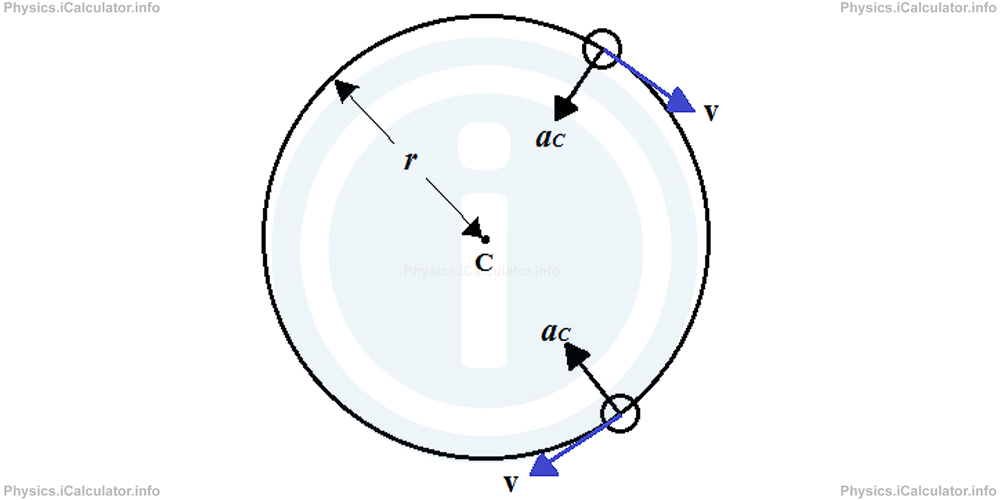
The equation of centripetal acceleration (in vector form, as discussed in tutorial "Kinematics of the Rotational Motion") is
where ∆v⃗ is the change (the difference) in velocity (only in direction, not in magnitude) of the rotating object in two given instants and Δt is the time interval between these two instants.
The scalar form of the equation (as discussed in tutorial "Kinematics of the Rotational Motion") is
where r is the radius of curvature. This is the reason why centripetal acceleration is often referred as "radial acceleration, ar".
From Newton's Second Law of Motion we known that where there is an acceleration, there is also a force causing it. Centripetal acceleration makes no exception to this rule as well. Therefore, it is obvious there must be a force causing the centripetal acceleration. This force is known as Centripetal Force, FC and it is the force responsible for keeping an object in rotation. It is in the same direction of centripetal acceleration, i.e. towards the centre of circle.
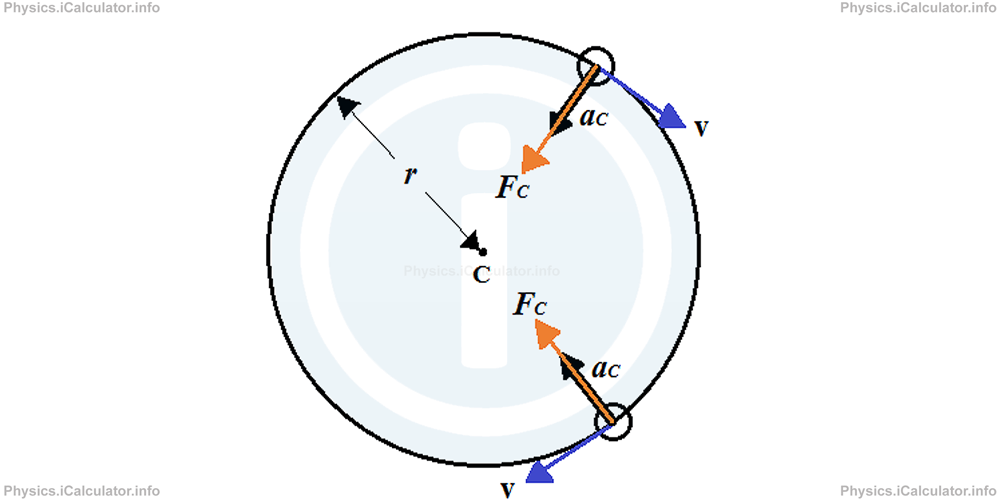
From Newton's Second Law of Motion, we have:
where m is the object's mass. In scalar form, the above equation is written as:
Thus, for example if a 20 kg object rotates at 4 m/s around a circular path of radius 2 m, the centripetal force that keeps the object moving in this circular path is
= 20 kg × (4 m/s)2/2 m
= 160 N
The scalar form of centripetal force equation is an indicator that this force exists only in rotational motion. Indeed, when the radius increases, magnitude of centripetal force decreases. In this case, any given arc of the circle straightens more and more until it looks like a straight line. This occurs when radius is very long as to be considered as infinity. From mathematics, it is known that when the denominator of a fraction is equal to infinity, the value of fraction is zero. Therefore, centripetal force in linear motion is zero because the denominator of fraction in the formula
is equal to infinity. This means "linear motion is a special case of rotational motion, i.e. linear motion is a rotational motion in which radius is equal to infinity."
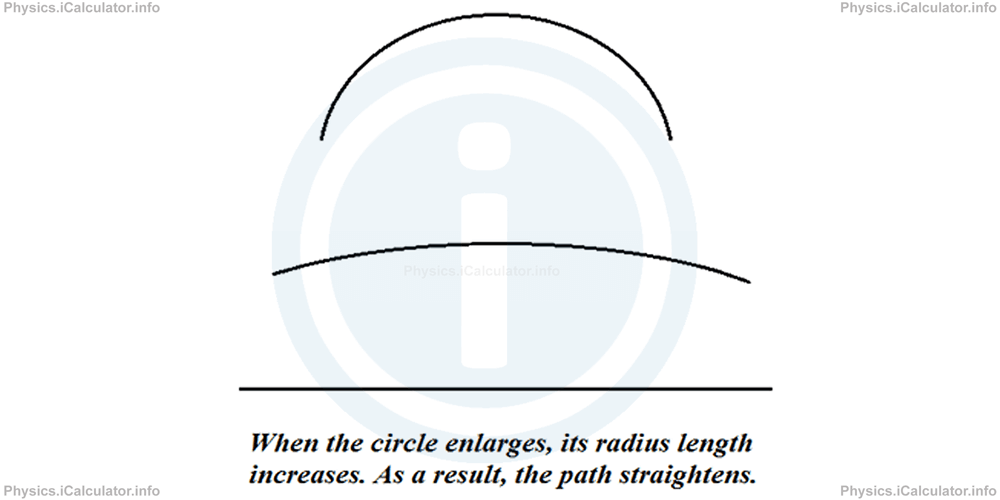
When centripetal force stops acting, the object moves linearly in the direction of the tangent line to the circle it had at the last moment when FC was still present in the system. Thus, for example, if you are rotating a stone using a rope and the rope cuts off, the stone will move according the last tangent as shown in the figure.
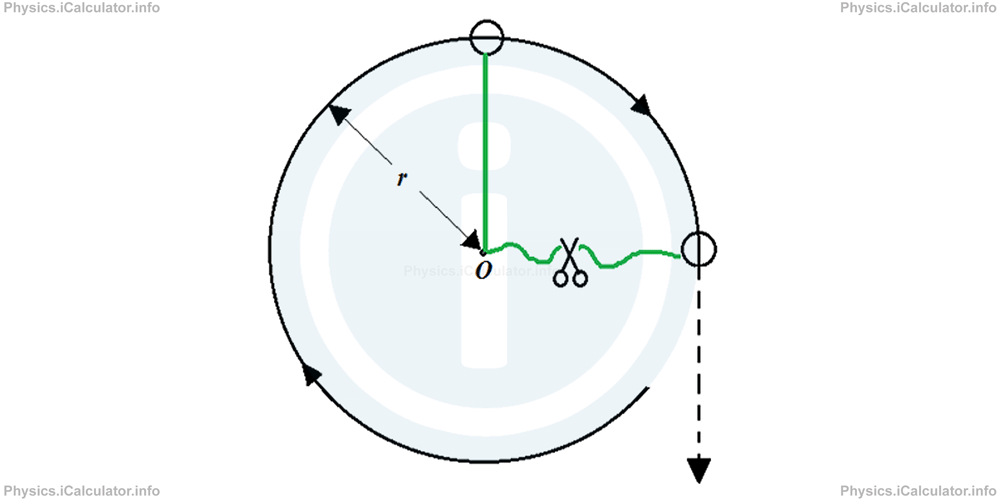
What is Centripetal Force?
Centripetal force is not a specific force like those we have dealt with in the past. Centripetal force is like a fictional character whose role can be played by many actors in different cinematographic productions. For example, Earth moves in an almost circular orbit around the Sun due to the gravitational force by which the Sun attracts it. In this case, gravitational force acts as a centripetal force as it keeps the Earth in rotation around the Sun. Another example: When you rotate around yourself a stone tied at the end of a rope, the centripetal force necessary to keep the stone rotating is provided by the tension of the rope. In this case, tension acts like centripetal force, and so on.
Example 1
A 2000 kg car enters a curve of radius 60 m as shown in the figure.
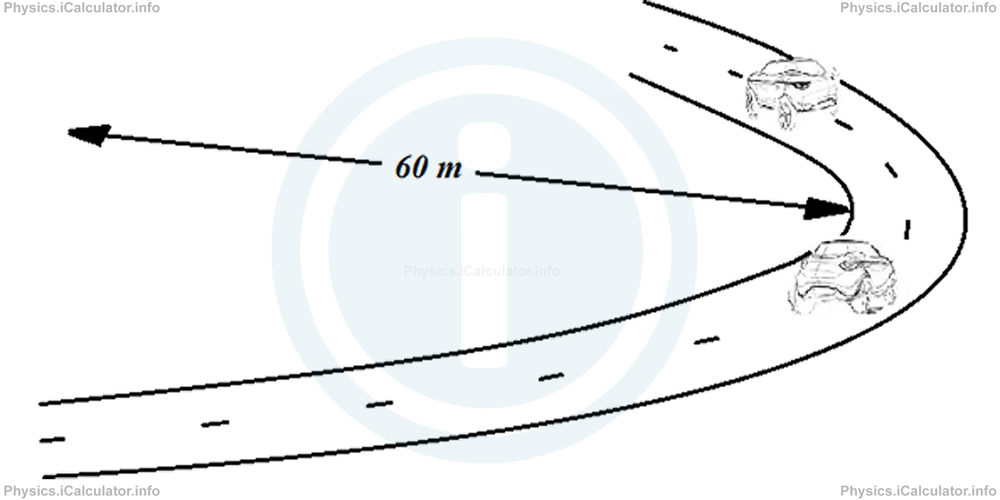
If the friction coefficient between the car's tires and asphalt is 0.6, calculate the maximum speed the car may have without skidding aside when it is inside the curve. Take g ≈ 10 m/s2.
Solution 1
In this case, the frictional force exerted between the car tires and asphalt acts like a centripetal force as it prevents the car from skidding aside (moving in a linear path). Therefore, if we find the value of frictional force, we have found that of centripetal force as well.
We have:
= μ × m × g
= 0.6 × 2000 × 10
= 12000 N
Therefore, we have FC = 12000 N as well. From the equation of centripetal force, we have
Substituting the known values, we obtain for the maximum speed allowed:
v2 = 360
v = √360
≈19 m/s
You have reached the end of Physics lesson 7.3.1 The Meaning of Centripetal Force. There are 3 lessons in this physics tutorial covering Centripetal Force, you can access all the lessons from this tutorial below.
More Centripetal Force Lessons and Learning Resources
Whats next?
Enjoy the "The Meaning of Centripetal Force" physics lesson? People who liked the "Centripetal Force lesson found the following resources useful:
- Definition Feedback. Helps other - Leave a rating for this definition (see below)
- Rotation Physics tutorial: Centripetal Force. Read the Centripetal Force physics tutorial and build your physics knowledge of Rotation
- Rotation Revision Notes: Centripetal Force. Print the notes so you can revise the key points covered in the physics tutorial for Centripetal Force
- Rotation Practice Questions: Centripetal Force. Test and improve your knowledge of Centripetal Force with example questins and answers
- Check your calculations for Rotation questions with our excellent Rotation calculators which contain full equations and calculations clearly displayed line by line. See the Rotation Calculators by iCalculator™ below.
- Continuing learning rotation - read our next physics tutorial: Kinematics of Rotational Motion
Help others Learning Physics just like you
Please provide a rating, it takes seconds and helps us to keep this resource free for all to use
We hope you found this Physics lesson "Centripetal Force" useful. If you did it would be great if you could spare the time to rate this physics lesson (simply click on the number of stars that match your assessment of this physics learning aide) and/or share on social media, this helps us identify popular tutorials and calculators and expand our free learning resources to support our users around the world have free access to expand their knowledge of physics and other disciplines.